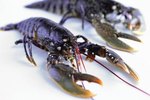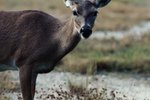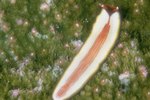
Human beings (Homo sapiens) are among of the more than 1 million species that compose kingdom Animalia, one of six taxonomic classifications of kingdoms of organisms on earth. Creatures of kingdom Animalia fall into one of the nine major phyla, or subgroups, and range from dogs to spiders to jellyfish. Within the kingdom is unimaginable diversity, as well as animals who share remarkable traits in common although they are far apart taxonomically within the Animalia kingdom.
Cell Structure
Creatures in kingdom Animalia are all multicellular organisms with eukaryotic cells that have nuclei and organelles. Unlike plants and fungi, animal cells do not have a cell wall. In addition, with the exception of sponges, cells are divided into specialized tissues or organs.
Movement
All Animalia members are mobile at some point in their lives. Motion is achieved through the musculoskeletal system and is one of the factors that allow animals to live in diverse ecosystems including oceans, mountains and deserts. Movement is achieved in various ways including legs, fins and wings.
Food and Respiration
All members of kingdom Animalia are "heterotrophs." They obtain nourishment from other organisms and digest the food internally. In addition, animals utilize aerobic respiration for cellular energy and food breakdown on a molecular level. Oxygen works at a molecular level to complete the metabolic processes necessary to turn fat and sugar into energy for the cells.
Reproduction and Life Cycle
Most animals reproduce sexually, a male's sperm fertilizing a female's egg. Eggs and sperm are haploid cells with only one copy of genetic material. All animals have diploid cells, which contain two copies of genetic material -- one copy from the egg and one from the sperm. The fertilized egg, or zygote, is the first stage in an animal's life cycle. As the cell divides and multiplies, it enters the next stage of life called the blastula. Cells continue to divide, multiply and specialize into different types of tissue into adulthood. Other phases of life vary for different animals. For example, after the blastula stage, some animals go through a larval stage before adulthood.
References
- Rhode Island College: The Six Kingdoms
- Horton High School: The Nine Major Phyla of Kingdom Animalia
- University of Maryland: Comparison Between Prokaryotic and Eukaryotic Cells
- University of Michigan, Animal Diversity Web: Animalia
- Sidwell Friends School: Kingdom Animalia
- State University of New York, University at Buffalo: Kingdom Anamalia
Resources
Photo Credits
-
Photos.com/Photos.com/Getty Images
Writer Bio
Maureen Malone started writing in 2008. She writes articles for business promotion and informational articles on various websites. Malone has a Bachelor of Science in technical management with an emphasis in biology from DeVry University.




